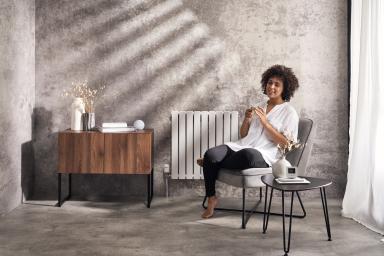What is smart multi-room heating and how can it benefit me?

‘Multi-room heating’ is where you can control the temperature of each room in your home using a smart TRV. We are going to explain how it all works!
Overview
Standard thermostatic radiator valves (TRVs) will bring a basic level of multi-room heating control to any home. By manually adjusting the valve with the numbers on, you can determine how much of your home the boiler heats, i.e. all your home, some of your home or maybe even just one room of your home (although not advised) and to what temperature. However standard TRVs do not communicate with your boiler and they will not turn the boiler on and off. For that you also need a room thermostat.
Smart multi-room systems, such as Drayton Wiser, are made up of a smart room thermostat and smart TRVs, all of which are in communication with each other and the boiler. Smart control systems can be adjusted from an app or a central console and bring many layers of sophistication to the system that will reduce your gas bill and carbon footprint further without necessarily reducing your comfort, as we will explore. But first, let’s understand the basics of what is going on…
Basic multi-room heating
Most homes will have a room thermostat that controls the boiler works. The room thermostat is commonly set between 16-21degC. The boiler will be on until the air around the thermostat reaches the temperature you have set it to and then it will tell the boiler to switch off.
It is common for the room thermostat to be located in the hallway as it tends to be a cooler space. Locating the thermostat in a warm space, such as the kitchen, risks it turning off early because for example the cooker or tumble dryer is on and this has warmed up the room. The room thermostat detects the warmer air and switches the boiler off, but because this is a false reading this happens before the rest of the house is warm.
Assuming the room thermostat is in the right place, TRVs can be manually adjusted to reduce the temperatures in individual rooms. For example, if you set the upstairs radiators to No.2 on the valve and the downstairs to No.3, the upstairs radiators will turn off sooner because they are targeting a lower room temperature. You can also turn off radiators in little used rooms (not recommended for rooms you sleep in as it can cause condensation/mould), or just turn them down lower. In this set up, the TRVs and room thermostat do not speak to each other.
The benefits:
With a basic thermostat and standard TRVs you are restricting what the boiler heats. This has been found to reduce the number of kW hours of gas you use, which is good!
The drawbacks:
A room thermostat and TRVs do not help control when the boiler is on, for that you need a programmer, or you will have to turn the boiler off manually. Some homes have a separate programmer or combined programmable room thermostat that will allow you to set the times the boiler comes on. A typical pattern for someone that is out at work all day is 6am-8am and 5pm-11pm. Restricting when the boiler is on has also been found to reduce the number of kW hours of gas used in the home.
Neither the TRVs, room thermostat or programmer will necessarily help the boiler run more efficiently. We’ll cover this more below.
Advanced multi-room systems
Genuine smart TRVs are in communication with the thermostat and come on and off based on their localised setting and that of the main room thermostat. During the set-up stages, each smart TRV is paired with the thermostat and given a name (sitting room, bedroom, office etc). Each room can be individually managed either via the central console or via an app, i.e. you do not have to go the radiator to make an adjustment. This makes micro-managing your heating system much easier.
The benefits:
Unlike standard TRVs which are on when the boiler is on, individual rooms can have their own room temperature and their own timings for when to come on. This allows for an enormous amount of fine tuning over a standard system and will lead to a reduced gas bill.
For example, some rooms like the bedrooms, might be set to 18degC and programmed to come on in the morning, but go off in the day. Whereas a home office could be on in the day to 21degC and off at night and even off on days when a homeworker goes into the office.
Smart TRVs also measure air temperatures more accurately, which reduces the margin for error. Standard TRVs commonly have numbers 1-6 - the number 3 is about 20degC - but most people do not know that and turn them up higher. This can lead to a lot of overcompensating by the occupant, turning the thermostat up high and then down low when the room overheats. Smart TRVs show the temperature in degC making it much easier to set the room temperature and trust that it is accurate.
What are the drawbacks?
Restricting what the boiler does too much can have an inverse effect on boiler efficiency and how the boiler operates. Most homes already have an oversized boiler and turning off some rooms means the demand gets even smaller, which can lead to the boiler cycling. Some boilers can be adjusted to reduce this and this should have happened at the point of installation, but often does not. Never-the-less, restricting what the boiler heats and when it is on is a very effective way to reduce gas use.

